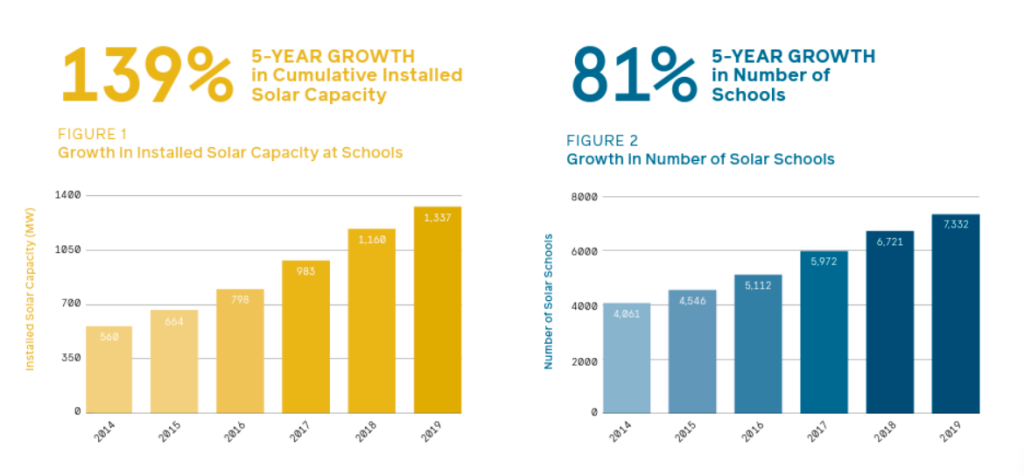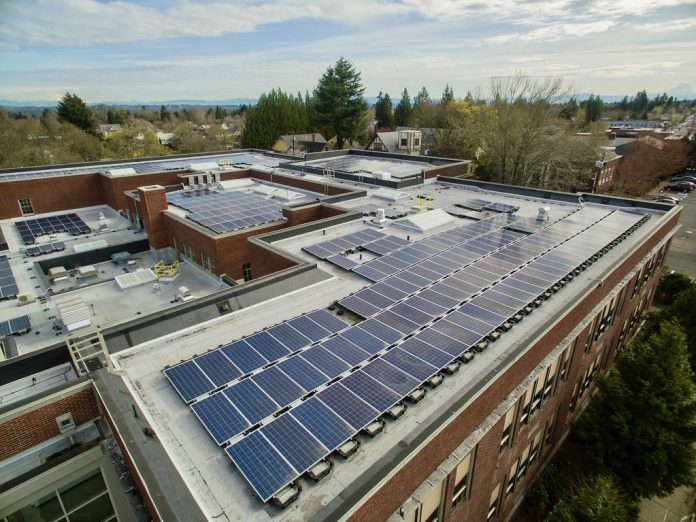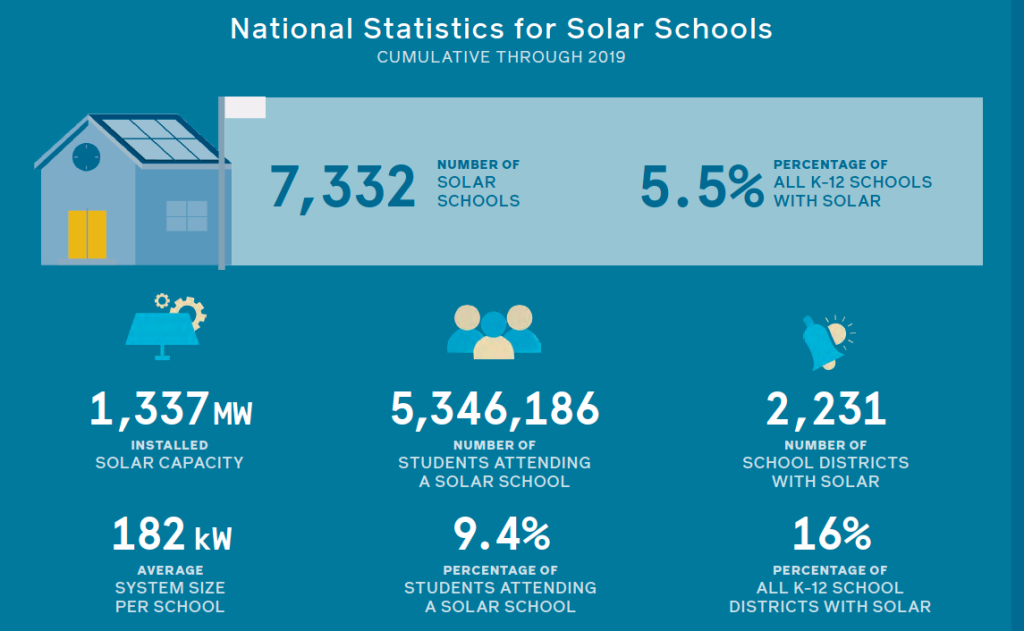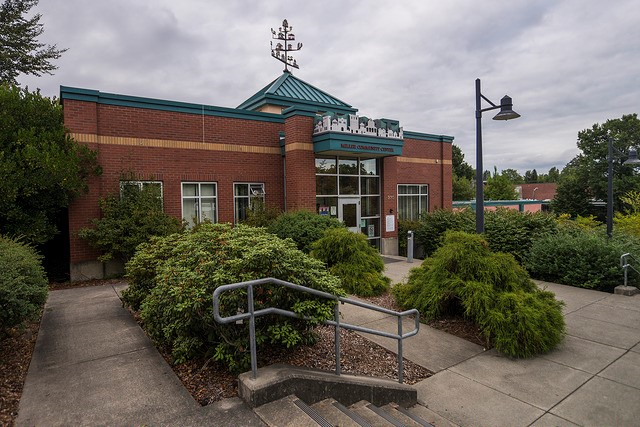Supporters of solar power for Seattle Public Schools can sign a petition or register to speak at Wednesday’s School Board meeting.
During the windstorm that swept through the Puget Sound region last week, more than a hundred thousand people were estimated to have lost power. For some the outage lasted only a few hours, while others waited a full day before service was restored. Scientists predict that such power outages will become more frequent as the effects of the climate crisis ramp up in intensity. One of the proposed solutions to counter these outages is the installation of solar powered microgrids, small electrical systems used to power a single neighborhood or an institution, like a school or community center.
Across the country, the movement to bring rooftop solar to schools is building. Supporters believe that transitioning schools to solar power offers a dual opportunity. By installing rooftop solar, schools can contribute to a clean energy transition, while also transforming the sites into community microgrids where people can access power during outages.

Last year, Seattle School Board voted unanimously in favor of a resolution committing the district to transition to 100% clean and renewable energy by 2040 or sooner. This clean energy transition, which was advocated for by 100% Clean Energy School Districts, a Sierra Club initiative, requires the elimination of all fossil fuel use in electricity, heating, cooling, cooking, and transportation. The resolution was the first of its kind to be passed in Washington State.
Now Seattle School Board President Zachary DeWolf has put forth an amendment to the district’s 2022 replacement capital levy that would fund clean energy projects at 14 Seattle schools. A draft of projects proposed for the levy details the wide range of maintenance and improvements sought by the district in a budget currently estimated at $765 million. Seattle residents will vote to approve the replacement capital levy, along with a replacement Educational Programs and Operations (EP&O) levy in February 2020.
To build momentum for the amendment’s adoption, climate advocacy organization 350 Seattle has been organizing students, parents, and other supporters to sign a petition in favor of rooftop solar for Seattle schools. They are also encouraging people to speak up in support of the clean energy amendment at the next virtual Seattle School Board meeting, which will take place at 5pm Wednesday, November 3rd. So far, over the petition has gained over 500 signatures.
Since replacement levies are voted on every six years, including a clean energy project amendment this time around is crucial, advocates say. Additionally, 350 Seattle has also been emphasizing the additional benefits of solar school sites.
“We are no longer in a world where just reducing our impacts will be enough. When it comes to thinking about climate justice and SPS’s role, we are talking about decarbonization and building resilience. Rooftop solar is an investment in our communities that can build climate resilience. So we can make sure people now can be okay and make sure we are taking action to create a livable future,” said Jess Wallach, campaigns co-director for 350 Seattle, at an organizing meeting for Solar Schools this August.
Part of that livable future involves creating living wages jobs. 350 Seattle says that investing in rooftop solar for schools could also boost local jobs through Seattle Public School’s student community workforce agreement, which requires that the district prioritize hiring firms that employ SPS related students and their families, as well as nontraditional participants in the construction labor force, such as women, members of the LGBTQ+ community, and Black workers.
Miller Community Center is an example of an existing public microgrid project in Seattle. In January of 2021, a partnership between the University of Washington and Seattle City Light led to the installation of rooftop solar panels, a battery energy storage system, and microgrid controls. The project was financed in part by a state clean energy grant from the Department of Commerce and cost about $3.3 million dollars.
While Seattle has so far emphasized public ownership of solar panels, private funding may also prove fruitful in advancing financing for solar in schools and other sites.
Third party ownership of solar panels may open up more affordable options to school districts because it removes the need for an upfront capital investment or spending on ongoing maintenance. An estimated 79% of solar installed on schools in the U.S. is financed by third-party ownership through a power purchase agreement (PPA) in which a solar developer funds, owns, and maintains the solar energy system for a set time period, often ranging from 10 to 25 years. In exchange, the school district pays for the electricity generated at a lower rate. While PPAs are allowed by law in 28 U.S. states, Washington State’s status has been labeled as “unclear.”
Nevertheless, Washington has been making progress on solar in schools. A report from Generation 180 ranked Washington as 27th in nation for installed solar capacity, 15th for number of schools with solar (109), and 16th for number of students attending a school with solar (80,226).
Natalie Bicknell Argerious (she/her) is a reporter and podcast host at The Urbanist. She previously served as managing editor. A passionate urban explorer since childhood, she loves learning how to make cities more inclusive, vibrant, and environmentally resilient. You can often find her wandering around Seattle's Central District and Capitol Hill with her dogs and cat. Email her at natalie [at] theurbanist [dot] org.





